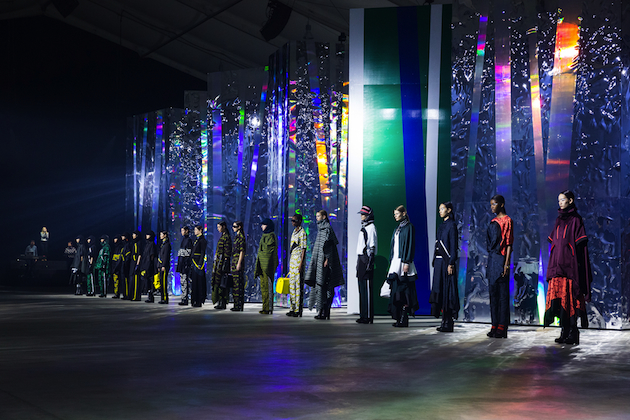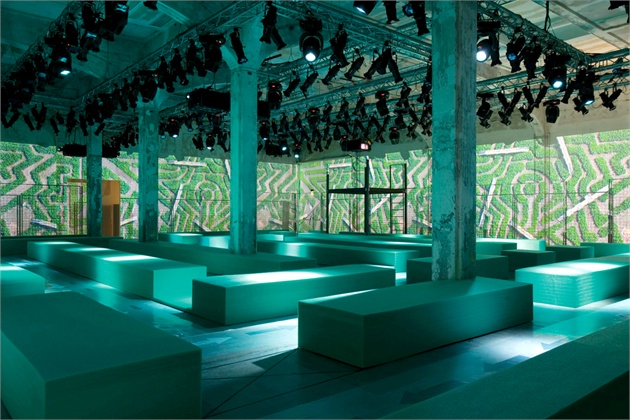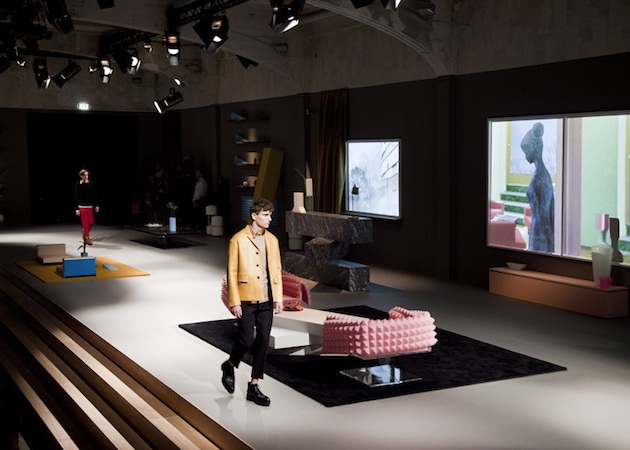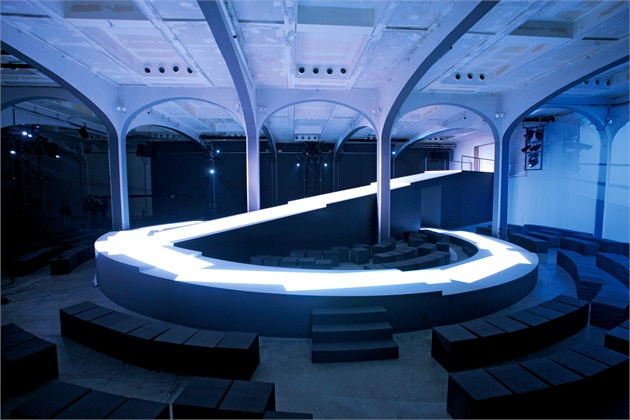
The phenomenon of the fashion show has come a long way since it first was introduced as a tool for buyers to see the clothes on living mannequins. The shows then were low-key and intimate, the public a small crowd sitting close to the runway, far removed from the giant and global shows we see today. With the evolution of media and ever faster rhythms of our society, the importance of fashion shows has grown dramatically. The runway shows are no longer just tools for showing the latest collections, but have instead become a platform for designers to build broader concepts completing the theme of their collections, experiment with ideas as well as establish their brand through visual representation of a specific kind of lifestyle, rather than relying just on plain clothes.

Kenzo and Prada are two examples of brands who used that tool with the aim of merge fashion, architecture and design, in a union of creative disciplines and contemporary ways of life. Fashion has for a long period of time been seeking legitimacy through different art collaborations, with the purpose of being categorised as an art form and taken more seriously. However, fashion has also taken inspiration from architecture, a world of references which has grown more important especially since the set designs become a crucial part of the show. Prada has for example teamed up with highly established architect Rem Koolhas to create its set design, which had a clear architectural approach. Kenzo’s latest collection had its set design built around an architectural and design perspective and kicked off their show with six holographic pillars that moved forward forming a wall, and then rotated again to create a divider in the center of the catwalk.

But are there any deeper reasons for this monumental, architectural approach than just a search for legitimacy and growing spectacularisation of the fashion world? If big brands continue proposing such masterpieces, fusions of creative disciplines that famish after the spotlight is turned off, does that say more about how fashion world is changing? Are clothes in themselves not enough? And what about smaller brands that cannot by any means produce such scenographic effects? Can fashion ever return to itself and be just that, an art form of thoughtful expression through the apparently most transient means, clothes? Only future will tell.


